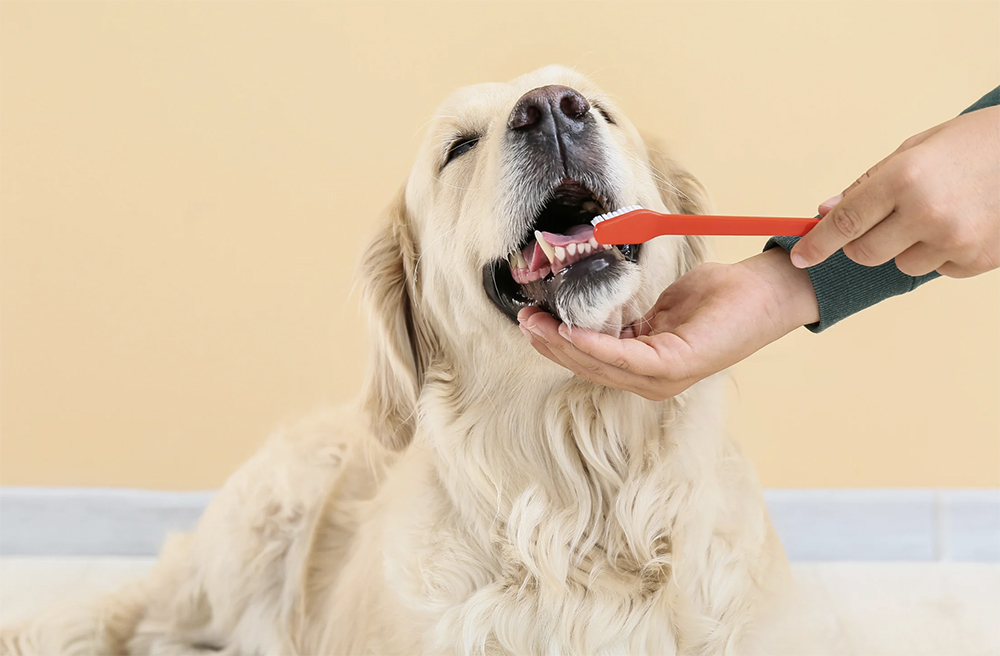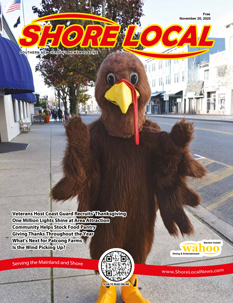By Heidi Clayton
According to the American Veterinary Medical Association, nearly 80 percent of all dogs show signs of periodontal disease by age three. That high number can be reduced by owners regularly brushing their dogs’ teeth. If you spend just a little bit of time teaching your dog to tolerate their muzzles being held and their teeth being checked, it can take just a few minutes to brush their teeth on a routine basis and reduce the risk of periodontal diseases.
Between hectic days of work, walking or training my dogs, and maintaining their coats and nails, I was quite frequently forgetting to incorporate toothbrushing into our grooming routine. I find it is easier to devote specific days in my schedule for grooming to be done. For example, Friday is nail grinding day here at Four on the Floor, and my dogs get their coats stripped after each walk for about five minutes. Toothbrushing is done Mondays, Wednesdays, and Fridays before bed. While I suppose one should brush their dog’s teeth every day of the week, I find it more realistic to brush at least three times a week.
Dogs’ teeth are angled differently, so I do recommend getting a toothbrush specifically designed for dogs. If you opt to use a human toothbrush, make sure to get a soft-bristle brush to avoid eroding the gumline. I prefer using a small silicone brush that slips over my finger and has bristles on all sides, so that I can easily reach the insides of my dogs’ teeth. I would suggest not getting an electric toothbrush for your dog, as you don’t want to brush too hard and erode the gumline. Also, the sound of the brush may scare your dog. If your dog does not like the sound of a nail grinder, they most likely won’t appreciate that same sound in their mouth. The best person to use the electric tools on your dog’s mouth is their vet. A professional teeth cleaning under anesthesia can prevent damage to the gums and is the perfect time for the vet to assess overall dental health.
You will need to use toothpaste specifically made for dogs. Human toothpaste contains Xylitol, which is poisonous to dogs and should never be used. Dog toothpaste comes in a variety of flavors like beef, chicken, and peanut butter. If you’re finding it hard to brush your dog’s teeth, you can also try the variety of dental chews available that are shaped in a specific fashion to help remove plaque. There are also a variety of dental spritzes and sprays available, although I believe you have to use them daily for them to be effective. Lastly, you can try any number of dental powders that contain a plaque-killing probiotic, and you can easily sprinkle them on top of your dog’s meals.
Keeping on top of your dog’s dental health will help prevent them from having to have teeth extracted as they age. Try adding dental care to your dog’s grooming routine.
If you have any questions, please feel free to email me at heidi@fouronthefloordogtraining.net.
Heidi Clayton started Four On the Floor Dog Training to provide positive, reward-based dog training in South Jersey. She breeds, trains and shows bull terriers under the SoraBully’s Bull Terriers kennel name. Email questions to heidi@fouronthefloordogtraining.net or learn more at https://fouronthefloordogtraining.net
















